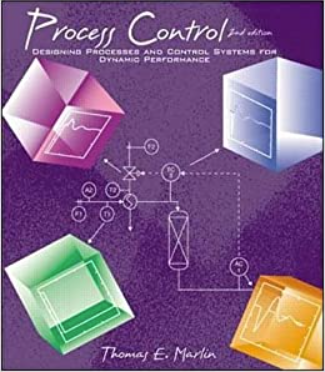
Process Control Designing Processes and Control Systems for Dynamic Performance (2nd Ed.)
T. Marlin
1 Introduction to Process Control
1.8 How is Process Control Documented?
3 Mathematical Modelling Principles
3.2 A modelling procedure
3.3 Modelling examples
4 Modelling and Analysis for Process Control
4.2 The Laplace Transform
4.3 Input-Output Models and Transfer Functions
5 Dynamic Behavior of Typical Process Systems
5.2 Basic System Elements
5.3 Series Structures of Simple Systems
5.4 Parallel Structures of Simple Systems
6 Empirical Model Identification
6.3 The Process Reaction Curve
7 The Feedback Loop
7.2 Process and Instrument Elements of the Feedback Loop
8 The PID Algorithm
8.2 Desired Features of a Feedback Control Algorithm
8.4 Proportional Mode
8.9 Importance of the PID Controller
10 Stability Analysis and Controller Tuning
10.5 Stability Analysis of Control Systems: Principles
10.7 Controller Tunng Based on Stability: Ziegler-Nichols Closed-Loop
10.8 Controller Tuning and Stability - Some Important Interpretations
12 Practical Application of Feedback Control
12.2 Equipment Specification
12.3 Input Processing
12.4 Feedback Control Algorithm
14 Cascasde Control
14.2 An Example of Cascasde Control
14.4 Cascade Performance
15 Feedforward Control
15.2 An Example and Controller Derivation
15.3 Feedforward Control Design Criteria
15.7 Further Feedforward Examples
20 Multiloop Control: Effects of Interaction
20.2 Modelling and Transfer Functions
20.3 Influence of Interaction on the Possiblity of Feedback Control
20.5 Process Interaction: The Relative Gain Array (RGA)
20.6 Effect of Interaction on Stability and Tuning of Multiloop Control Systems
21 Multiloop Control: Performance Analysis
21.3 Multiloop Control Performance Through Loop Pairing
21.4 Multiloop Control Performance Through Tuning
23 Centralized Multivariable Control
23.3 An Alternative Dynamic Modelling Approach
Appendix H
Other


